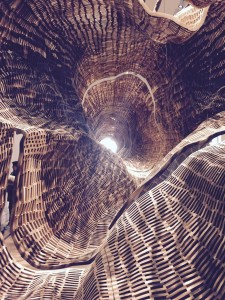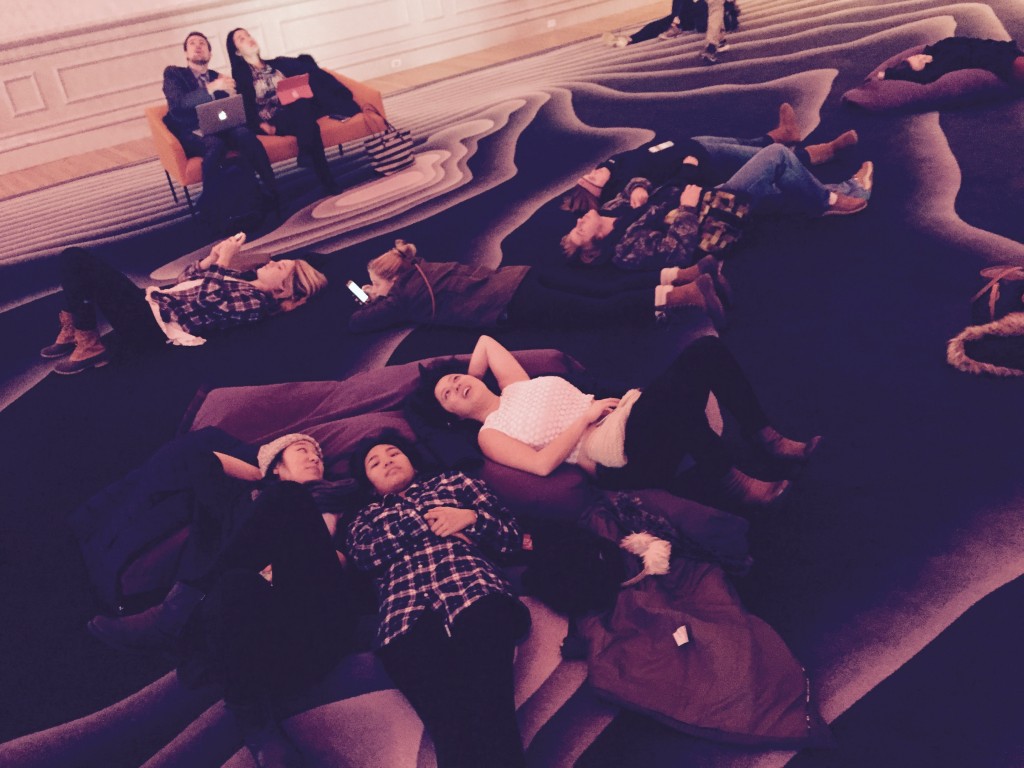I admit: I’m the type of person who sees every New Year as a chance to reboot, revisit and refresh.
And this year, 2016, I want to try and sustain a yearlong exploration of wonder.
Part of the reason for that is pretty straightforward: on January 1, I officially became a partner in a global design studio that helps communities reimagine learning at the intersection of space, culture and story.
Our name? WONDER, By Design.
But part of it is also a desire to wrestle with some questions my colleagues and I want to understand more deeply:
- If wonder is to learning as carbon is to life, then what are the neurochemical underpinnings of wonder itself?
- In what ways does our capacity for wonder help explain what is most essential to what shapes and drives us as human beings?
- What blocks our ability to wonder widely about the world? What gets us unblocked?
You can imagine my excitement, then, when I saw that the Renwick Gallery, a century-old museum in Washington, D.C. once described as the “American Louvre,” had recently undergone its own reboot – a literal, massive, two-year renovation – and was reintroducing itself to the public by having its first new exhibit transform the entire building into an immersive, multisensory work of art.
The inaugural exhibit’s name? WONDER.
So, last week, just before a massive blizzard ground the nation’s capital to a halt, I decided to visit on a random weekday morning.
A mixture of locals and tourists, old and young, prepared to move their way through the different exhibits and rooms with a hushed reverence. A sign on the wall, however, reminded us not to let any initial silence be mistaken for any required sense of formality: “Photography encouraged,” it read.
I walked into the first room, where I found a termite mound of index cards – a landscape of detritus, reconstituted into something both foreign and recognizable.
I squinted to see through a diaphanous indoor rainbow, made entirely of string.
Strangers and I peered at one another though a round opening in a human-sized bird’s nest – two sides of the same mirror.
And I walked alongside a Plaster Paris cast of a massive tree laying on its side, its bark recreated by the careful stitching together of small wooden rectangles, its empty center providing a portal through which to view . . . what exactly? The other end? The eternal? The unnameable?

What drives us as human beings to spend thousands of hours making a plaster cast of a living tree? What is sparked in us when we experience it here, in this distinctly man-made space? And when I tell you that in two years the cast will be laid at the base of the actual tree it was based on so that it can gradually decompose and become part of the forest floor, what does that information make you feel?
Then I walked to the second floor of the exhibit. Other museumgoers were scattered on their backs underneath a giant, colorful, undulating map of the energy explosion that caused the Tohoku earthquake and tsunami in 2011. I wandered into a magenta-hued room whose walls were covered by constellations of actual insect bodies, impossibly large. And in each room I jotted down framed quotations from people across the past 1,000 years who have wondered about wonder.
“Wonder – is not precisely Knowing And not precisely Knowing not – A beautiful but bleak condition He has not lived who has not felt.”
“Man is surprised to find that things near are not less beautiful and wondrous than things remote.”
And my personal favorite – “It is not understanding that destroys wonder; it is familiarity.”
I thought about that one as I returned to the hollow tree, and stared again through its open center. All along the outside, the tree’s branches jutted out like natural antennae, thin wires suspending it at eye-level.
This, I realized, was what this exhibit had led me to wonder about: What suspends us? What do we suspend?
Over 800 years ago, St. Albertus Magnus offered his own take on those questions. “Wonder,” he said, “is defined as a constriction and suspension of the heart caused by amazement at the sensible appearance of something so portentous, great, and unusual that the heart suffers a systole.”
It’s not an answer, just another layer to peel off and examine. I hope you’ll join me in the search, and add your own thoughts, in the months ahead.

Blair Peterson says:
Congratulations, Sam! I hope that our paths cross in the near future. Blair
Don Davies says:
Wonderful!! A great introduction and a reminder for me that wonder is one important part of democracy in action.
Cristina says:
Love it! All I can think is how we want to inspire our students to always have the sense of WONDER so they can always have the motivation to explore and be amazed!! Cristina
Andy Calkins says:
Sam, I saw that Renwick exhibit on MLK Day and I’m STILL filled with wonder from the experience. Clearly it will stay with you in the same deep and nudging kind of way. Wonderful piece and to Cristina’s note: so much of our work in education is to help fan the flames of students’ innate sense of wonder. I’d love to see a school or district mission statement that expresses that as a core goal.
Thanks and all the best!
Bruce Deitrick Price says:
Hello, Sam, while I’m thinking about it, I’ll post just one nagging thought. A lot of K-12 education for gifted children, smart children, and advanced placement children is, in fact, very good. The problem for me is that these children are precisely those easiest to teach.
As I was studying the reading wars, I heard one startling comment several times: “a lot of kids, you could lock them in a closet and they will still learn to read.” They’ll do fine, no matter what you do to them. And I think this is true of brainy kids in general, arty kids in general, restlessly curious kids in general. They’ll do fine. They are smart, and they will find a way. (That’s why I’m always a little annoyed by Mensa’s relentless obsession with gifted children, as if all the other children don’t need special attention as well.)
Here’s a generalization I’ve come up with, the slower the kid, the more genius you need to teach that kid. The top 10% of children in this country are getting, as I suggested, a good education, perhaps a great education. It’s all the rest who are being trampled on. And the most trampling is on the bottom third. Those are the kids who drop out of high school as soon as they can, still illiterate and largely ignorant. QED: Education starting in kindergarten should be designed to lift up all kids.
I wrote an article a few months ago called “If Bill Gates really wants to help education” and the theme was that instead of wasting $1 billion on Common Core, he could pump 25 million into encouraging hotshot designers, video makers, film companies, etc. to create the best reading programs, the best arithmetic programs, the best history programs, the best science programs, etc.– stuff that would light up young minds and propel them toward being educated.
Here is what I am trying to say. Just because you create a classroom with a lot of happy successful students doesn’t close the case for me. My first question is, are these ordinary kids or a special subset of kids? We want to bring everybody into the life of the mind.
Bruce Deitrick Price
Sam says:
Thanks for weighing in, Bruce. Unquestionably, kids whose lives have been marked by suffering and struggle are bringing a different set of needs with them to school than kids whose lives are filled with water and sunlight. To me, however, the person whose work best demonstrates what all children need to learn and grow is Maria Montessori. As I’m sure you know, her work was deeply empirical — she kept revising her methods based on what she observed in her children, and the children she worked with were Rome’s least fortunate and most scarred. This is why I think the No Excuses movement is starting to see a lot of defectors, as people who anchored that movement get old enough to have their own kids and realize they don’t want to send their kids to the schools they’ve dedicated their careers to. Which is a long way of saying that while kids have different levels of need, the core of what they need in a healthy learning environment is the same: skilled adult facilitation and support, love and trust and support and the right amount of autonomy, meaningful work to engage in, and — in the spirit of this particular piece — enough opportunities to wonder widely, and wildly, about the world and their place in it.
Sam says:
YES. The closest I’ve seen is the MC2 School’s explicit emphasis on wonder and curiosity. I think their rubric to assess growth in this area is genius — check it at http://mc2school.wikispaces.com/Habits#Curiosity%20and%20Wonder
Sam says:
Thanks for reading and for weighing in, Cristina!
Sam says:
Thank you, Don!
Sam says:
Thanks, Blair. Me too.
Daniel Baron says:
Wonder has one of my favorite words since childhood. So many of the questions that I ask start with, “I wonder….”
I wish us all a year year that is filled with wonder.
In Peace with Love